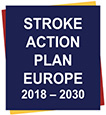Secondary Prevention

Secondary Prevention can reduce stroke recurrence by 80%
Secondary prevention applies to almost all patients with stroke or TIA and can reduce stroke recurrence by 80%.
Each stroke is different and its causes need to be worked out in order to plan better secondary prevention methods.
The identification of risk factors has two major cornerstones:
- Identification and helping patients to tackle ‘life-style’ risk factors in a personalized approach
- The ‘medical’ risk factors, for which management guidelines exist
Risk factors such as poor diet, alcohol and tobacco use, drug addiction, obesity, high blood pressure and cholesterol, atrial fibrillation, diabetes mellitus, and sleep apnoea are modifiable and must be addressed in every patient as they influence each other. Non-modifiable factors, such as age, sex, race or ethnicity, and family history, also have an impact on the modifiable risk factors. Moreover, patients with stroke or TIA often have coexisting cardiac, renal or peripheral arterial disease, which needs investigation and treatment.
Investigation and treatment must commence in hospital (stroke unit or stroke clinic) and continue throughout life in the community. Applicable ESO guidelines and national guidelines are regularly updated, and most investigations and interventions are available to healthcare systems across Europe. The routine use of these guidelines will ensure equity of access and equality of care across Europe.

SAP-E Key Performance Indicator
Access to basic secondary prevention including antithrombotics, antihypertensives and statins as well as life style advice (% according to WHO data).
Further research and development priorities
For all patients
- Do technological solutions improve compliance?
- Do biomarkers identify patients at high of stroke recurrence and improve secondary prevention?
- Can identification of non-responders to antithrombotic therapy improve secondary prevention?
- Can prevention be enhanced in patients taking recommended prophylaxis?
- Which preventive measures are beneficial in the very old?
- What preventive therapies are effective in sporadic small vessel (lacunar) stroke and monogenic cerebrovascular disorders, such as CADASIL (Cerebral Autosomal Dominant Arteriopathy with Subcortical Infarcts and Leukoencephalopathy) and Anderson Fabry disease?
Healthcare delivery
- Should patients with a minor stroke or TIA be rapidly assessed in a fast-track one-stop TIA clinic or in the stroke unit following admission?
- Should all patients be followed up long-term, e.g. at one year?
Lifestyle and risk factors
- What is the optimal blood pressure target for each type and subtype of stroke?
- Does treatment of sleep apnoea reduce stroke recurrence?
- Which nutritional interventions and physical activities reduce stroke recurrence?
Large artery atherosclerosis
- Does best medical therapy obviate the need for carotid intervention in asymptomatic patients?
- Are new antithrombotic strategies required?
- Will advanced stenting procedures further reduce recurrence?
- Will new lipid-lowering drugs further reduce stroke recurrence?
- Should patients be investigated for asymptomatic atherosclerosis?
- What is the optimal treatment for intracranial stenosis causing recurrent events?
Cardioembolism
- Which patients benefit from PFO closure?
- What is the optimal treatment strategy in patients with AF and a high risk of ischaemic and haemorrhagic stroke?
- What is the optimal time to start oral anticoagulation after AF-associated stroke?
- How should patients with AF and atherosclerosis be treated?
SVD
- How can SVD-related cerebral lesions and their progression be prevented?
- Should the presence or burden of SVD lesions influence secondary prevention decisions?
Cryptogenic stroke/embolic stroke of undetermined source
- Which preventive therapies are effective?
ICH
- Which patients with AF on oral anticoagulants can be restarted with oral anticoagulants following ICH?
- When should statins be (re-)started after ICH in patients with ischaemic vascular disease?
SAH
- Understand the mechanisms of aneurysm formation and rupture in order to prevent recurrent SAH.



